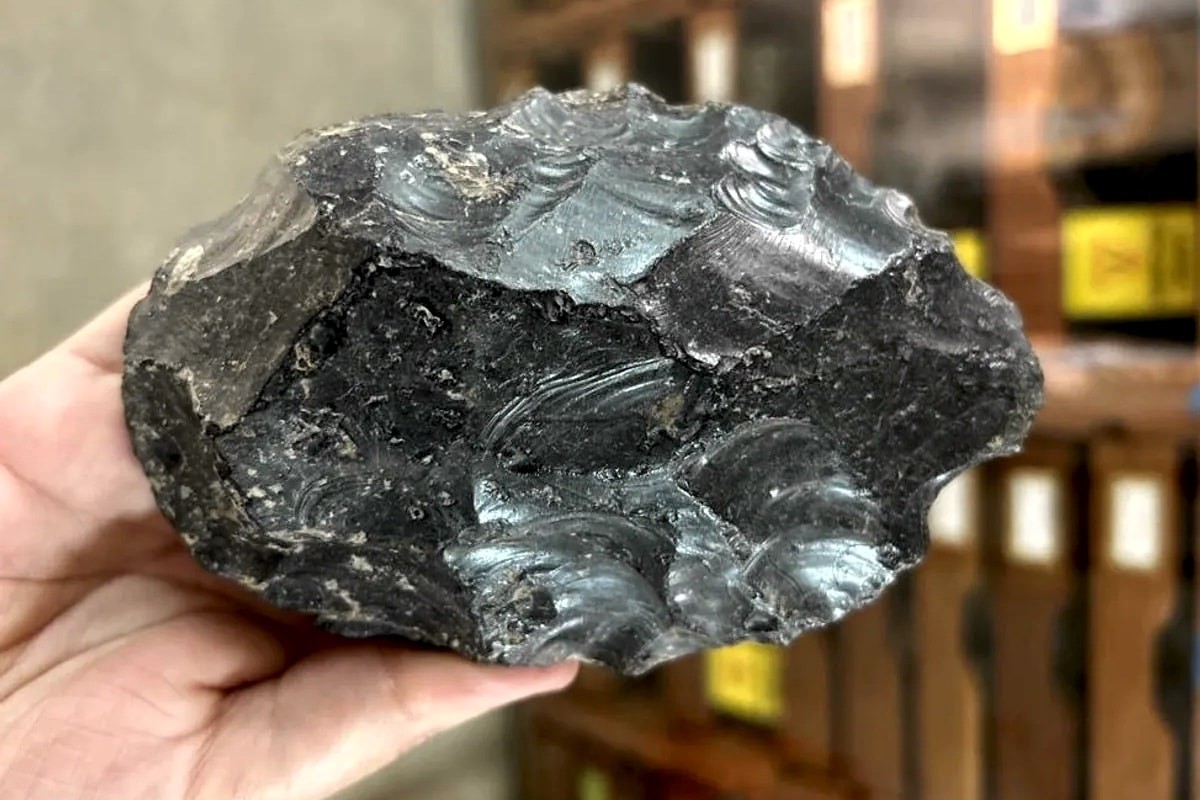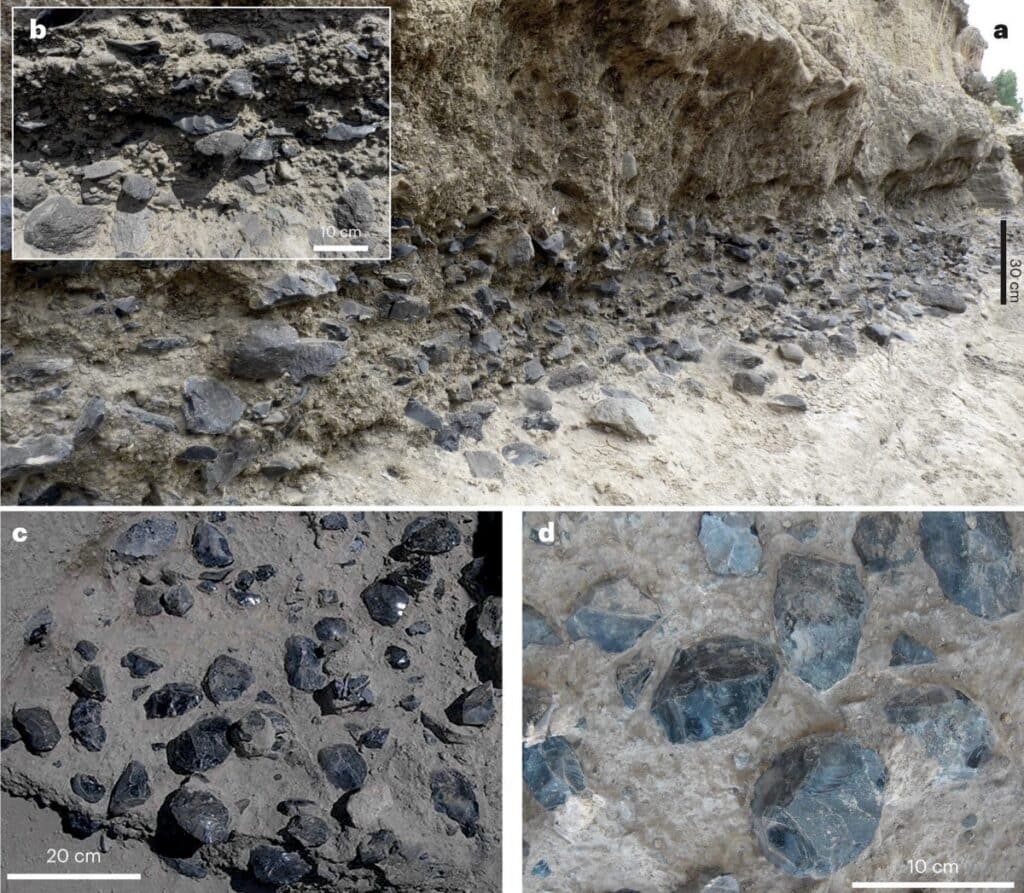In Africa, discovered the oldest "workshop" for the manufacture of axes (2 photos)
Anthropologists have unearthed the remains of a mass production center obsidian hacks, where ancient Homo craftsmen worked even harder million years ago. 
Obsidian ax from Chalk-Konture
Paleolithic - the ancient stone age - was the longest era in the history of mankind. It began over 2.5 million years ago and ended only about 15 thousand years ago, with the onset of the Mesolithic. Everybody At that time, our ancestors slowly mastered natural materials - stones and wood, skin and bones of animals - and occasionally created new, more efficient technologies for their processing.
As this work became more complex in ancient human communities, "workshops" arose - places where experienced and skillful "professionals" mass-produced stone tools, providing them everyone who wants to. Remains of such centers of ancient production are found in Europe, the age of some is estimated up to 774 thousand years.
However, the new work of anthropologists from Spain, France and Germany made it possible to find the first Paleolithic "workshop" in Africa, and she turned out to be the oldest of all known so far. It is reported in an article by Margherita Mussi and her colleagues, published in the journal Nature Ecology & Evolution. 
Remains of an ancient "workshop" in Melka-Kontur
Scientists conducted excavations in Ethiopia, in the valley of the Awash River, where there is a famous monument of the Paleolithic era Melka-Konture. There managed to discover a total of 578 axes - the oldest axes, even devoid of a handle. All of them are processed in a similar way, which indicates the transfer of "skill" between all participants in the process. Massey and her co-authors note that in this case, special attention was paid to the fine "refinement" of the details of the final product.
Dating showed that axes belong exclusively to distant time, about 1.2 million years ago. It makes a "workshop" not only the first found in Africa, but also the oldest of all known. It is impossible even to say what kind of hominids she applies.
Curiously, for the manufacture of axes they used mainly obsidian, which is considered particularly difficult to process and requires a lot of effort to obtain a product that fits comfortably in the hand and does not cut skin. Therefore, obsidian began to be widely used much later than flint. Nevertheless, the craftsmen from Melka-Konture mastered it surprisingly early: only three samples found in this place are made of flint, the rest are obsidian.





















